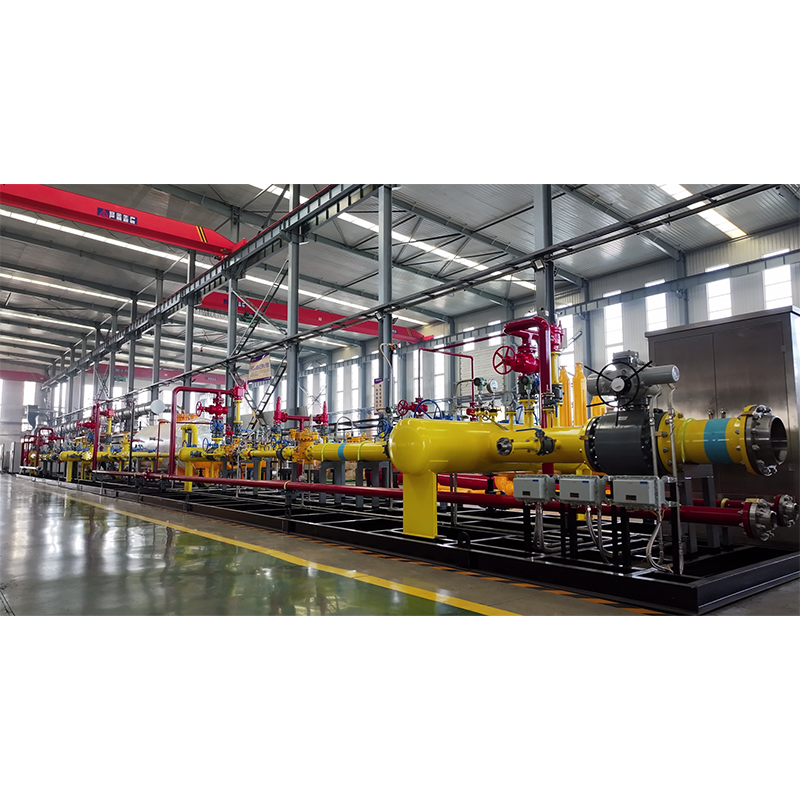
Sep . 23, 2024 02:28
Back to list
مزلقة تخفيض الضغط
Understanding Pressure Relief Valves and Their Importance in Industrial Applications
Pressure relief valves (PRVs) play a crucial role in maintaining safety and efficiency in various industrial systems. These devices are designed to release excess pressure from a system, ensuring that it operates within the designated safety limits. This article explores the functioning, types, and significance of pressure relief valves in different applications.
What is a Pressure Relief Valve?
A pressure relief valve is a safety device that automatically releases a substance (liquid or gas) from a pressurized vessel or system when the pressure exceeds a predetermined level. By doing so, PRVs prevent potential damage to equipment and minimize the risk of accidents, such as explosions or leaks, which could have severe consequences for both human safety and the environment.
How Do Pressure Relief Valves Work?
The primary function of a pressure relief valve is to monitor the pressure within a system. When the pressure reaches the set point, the valve opens to allow the excess pressure to escape. Once the pressure drops back down to a safe level, the valve closes again. This automatic operation is essential for ensuring consistent safety measures in various industrial processes.
The operation of a PRV is often based on two main principles the spring-loaded design and the pilot-operated mechanism. In a spring-loaded valve, a spring holds the valve closed; when the system pressure exceeds the force exerted by the spring, the valve opens. Pilot-operated valves, on the other hand, use a smaller 'pilot' valve to control the operation of a larger main valve, providing more precise pressure control and response.
Types of Pressure Relief Valves
.
1. Spring-Loaded Relief Valves Widely used in various industries due to their simplicity and reliability. They are ideal for applications involving steam, gas, and liquid services.
مزلقة تخفيض الضغط

2. Pilot-Operated Relief Valves These are used in systems that require precise control and the ability to handle high flow rates. They are often found in chemical processing plants.
3. Deadweight and Weight-Loaded Valves Used in applications requiring a specific set point, these valves rely on the weight of a solid object to maintain pressure.
4. Safety Relief Valves Often employed in steam systems, they are designed to prevent overpressure conditions by venting steam when pressures rise.
The Importance of Pressure Relief Valves
The significance of pressure relief valves cannot be overstated. They are essential for
- Safety By preventing overpressure conditions, PRVs help avoid catastrophic failures that could result in injuries or fatalities.
- Regulatory Compliance Many industries have stringent regulations regarding pressure safety. PRVs help companies meet these safety standards.
- Operational Efficiency Maintaining optimal pressure levels contributes to the overall efficiency and longevity of equipment, reducing downtime and maintenance costs.
- Environmental Protection By minimizing the risk of leaks and bursts, PRVs serve as a critical line of defense against environmental pollution.
In conclusion, understanding the function and importance of pressure relief valves is vital for anyone involved in industrial processes. These devices are not just components of a system; they are essential guardians of safety and efficiency, providing peace of mind in managing pressurized environments. Regular maintenance and testing of PRVs should be a priority to ensure their reliable operation and to safeguard both personnel and equipment.
Next:
Latest news
-
Safety Valve Spring-Loaded Design Overpressure ProtectionNewsJul.25,2025
-
Precision Voltage Regulator AC5 Accuracy Grade PerformanceNewsJul.25,2025
-
Natural Gas Pressure Regulating Skid Industrial Pipeline ApplicationsNewsJul.25,2025
-
Natural Gas Filter Stainless Steel Mesh Element DesignNewsJul.25,2025
-
Gas Pressure Regulator Valve Direct-Acting Spring-Loaded DesignNewsJul.25,2025
-
Decompression Equipment Multi-Stage Heat Exchange System DesignNewsJul.25,2025

